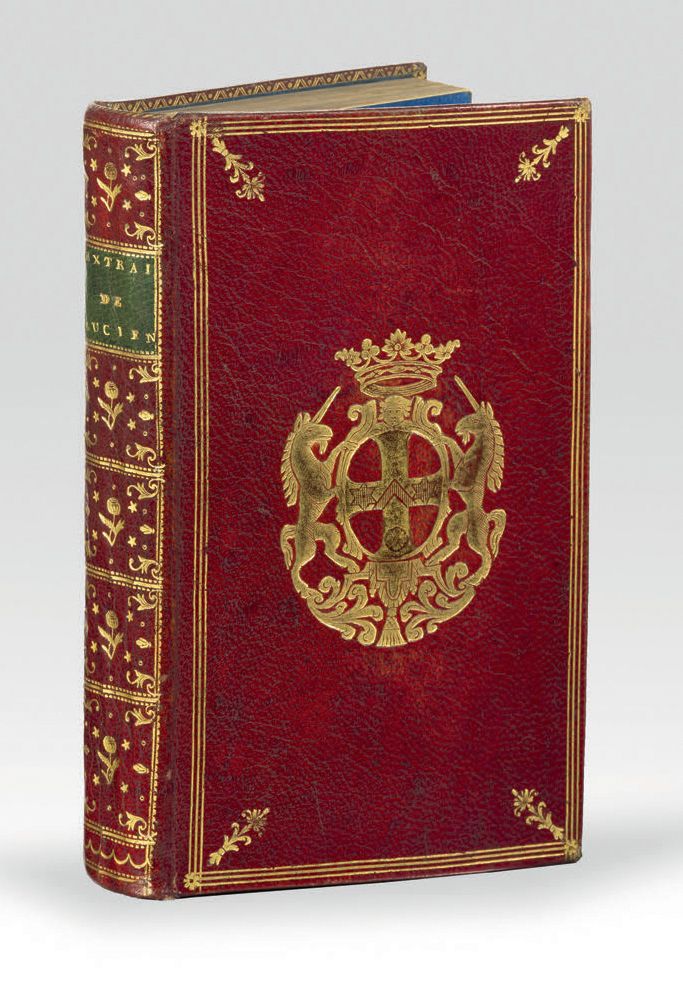Description
LUCIEN et XÉNOPHON.
Extracts from Lucian and Xenophon, translated by M. l'abbé Gail. Paris, chez l'Auteur, Brocas, Nyon, Colas, Le Jay, 1786. In-12, red morocco, triple gilt fillet, small iron in the corners, coat of arms in the center, ornate spine, green title page, small inner scroll, gilt edges (Period binding). A dedication copy, with the arms of Louis Le Peletier de Mortefontaine (1730-1799), maître des requêtes, prévôt des marchands de Paris and conseiller d'État (OHR, pl. 894). Minor stain to four leaves at the end of the volume. Spine slightly creased.
You may also like
